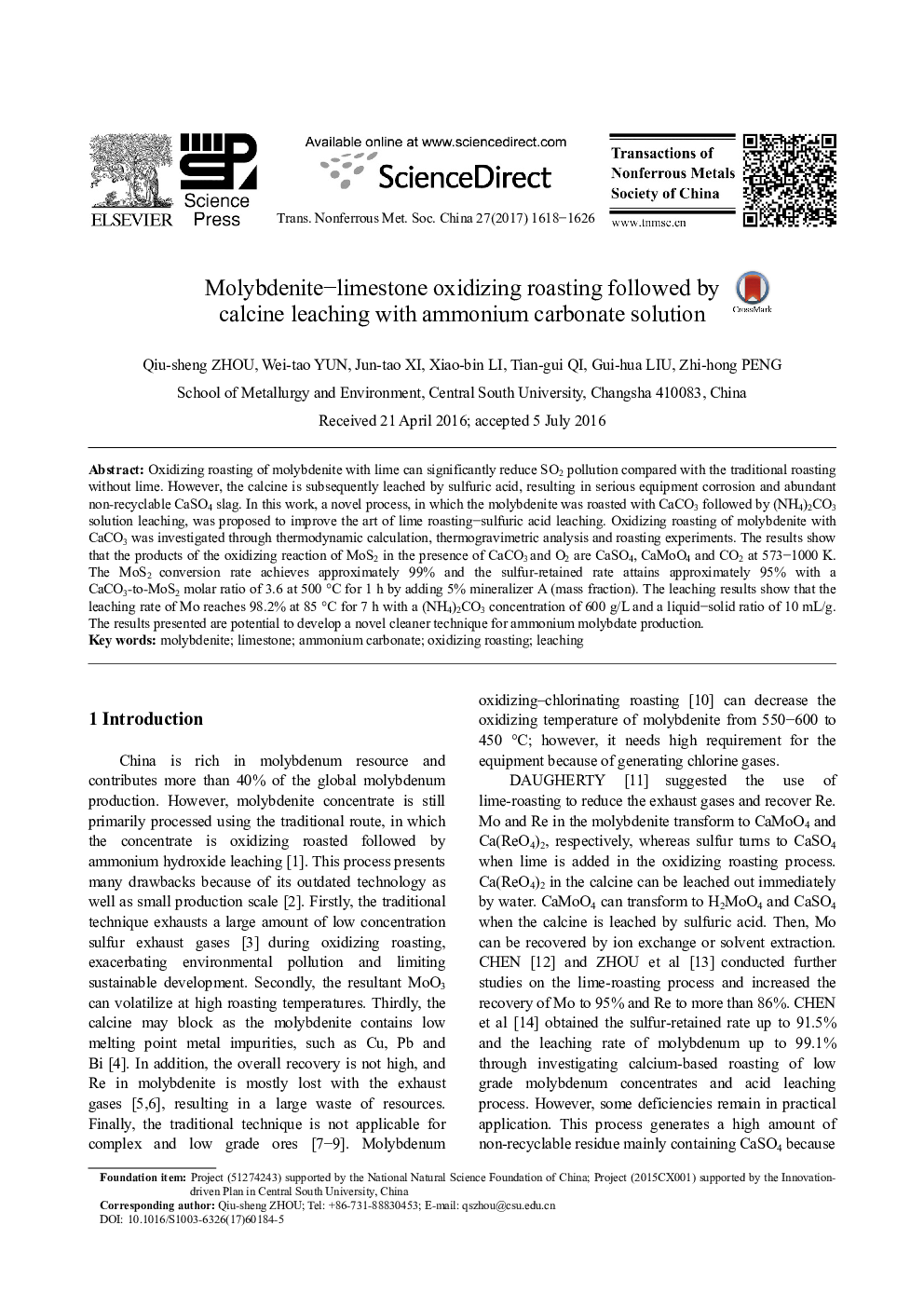| Article ID | Journal | Published Year | Pages | File Type |
|---|---|---|---|---|
| 8011879 | Transactions of Nonferrous Metals Society of China | 2017 | 9 Pages |
Abstract
Oxidizing roasting of molybdenite with lime can significantly reduce SO2 pollution compared with the traditional roasting without lime. However, the calcine is subsequently leached by sulfuric acid, resulting in serious equipment corrosion and abundant non-recyclable CaSO4 slag. In this work, a novel process, in which the molybdenite was roasted with CaCO3 followed by (NH4)2CO3 solution leaching, was proposed to improve the art of lime roasting-sulfuric acid leaching. Oxidizing roasting of molybdenite with CaCO3 was investigated through thermodynamic calculation, thermogravimetric analysis and roasting experiments. The results show that the products of the oxidizing reaction of MoS2 in the presence of CaCO3 and O2 are CaSO4, CaMoO4 and CO2 at 573-1000 K. The MoS2 conversion rate achieves approximately 99% and the sulfur-retained rate attains approximately 95% with a CaCO3-to-MoS2 molar ratio of 3.6 at 500 °C for 1 h by adding 5% mineralizer A (mass fraction). The leaching results show that the leaching rate of Mo reaches 98.2% at 85 °C for 7 h with a (NH4)2CO3 concentration of 600 g/L and a liquid-solid ratio of 10 mL/g. The results presented are potential to develop a novel cleaner technique for ammonium molybdate production.
Related Topics
Physical Sciences and Engineering
Materials Science
Metals and Alloys
Authors
Qiu-sheng ZHOU, Wei-tao YUN, Jun-tao XI, Xiao-bin LI, Tian-gui QI, Gui-hua LIU, Zhi-hong PENG,
